The usual rule of thumb is to plant bulbs three times the distance from base to shoulder of the bulb. There are exceptions which I will go into at the end of this post.
These large #1 size daffodil bulbs are the largest available and not found in nurseries. The planting dept of these triple bulbs is measured from the base to where the bulb begins to narrow, or the shoulder. If that measurement is 3″, then the bulb is planted with 6″ of soil above the bulb.
These charts indicate that the general planting depth for tulips is 8″, daffodils is 6+ inches, spring blooming crocus is 2″, and anemones go down 1-1/2″. The fall blooming Crocus Sativus is planted 4″ deep.
In my case, I plant tulips shallowly and treat them like annuals so that they are easy to pull out and throw away after they bloom, as they need very cold weather to naturalize.
The Giant Scilla is an exception as it stands with about a third of the bulb above soil level!
Peonies are planted very shallowly with the pink or white buds 1/2 inch below ground level.
Of course, the soil should be well amended and loosened before planting if possible.

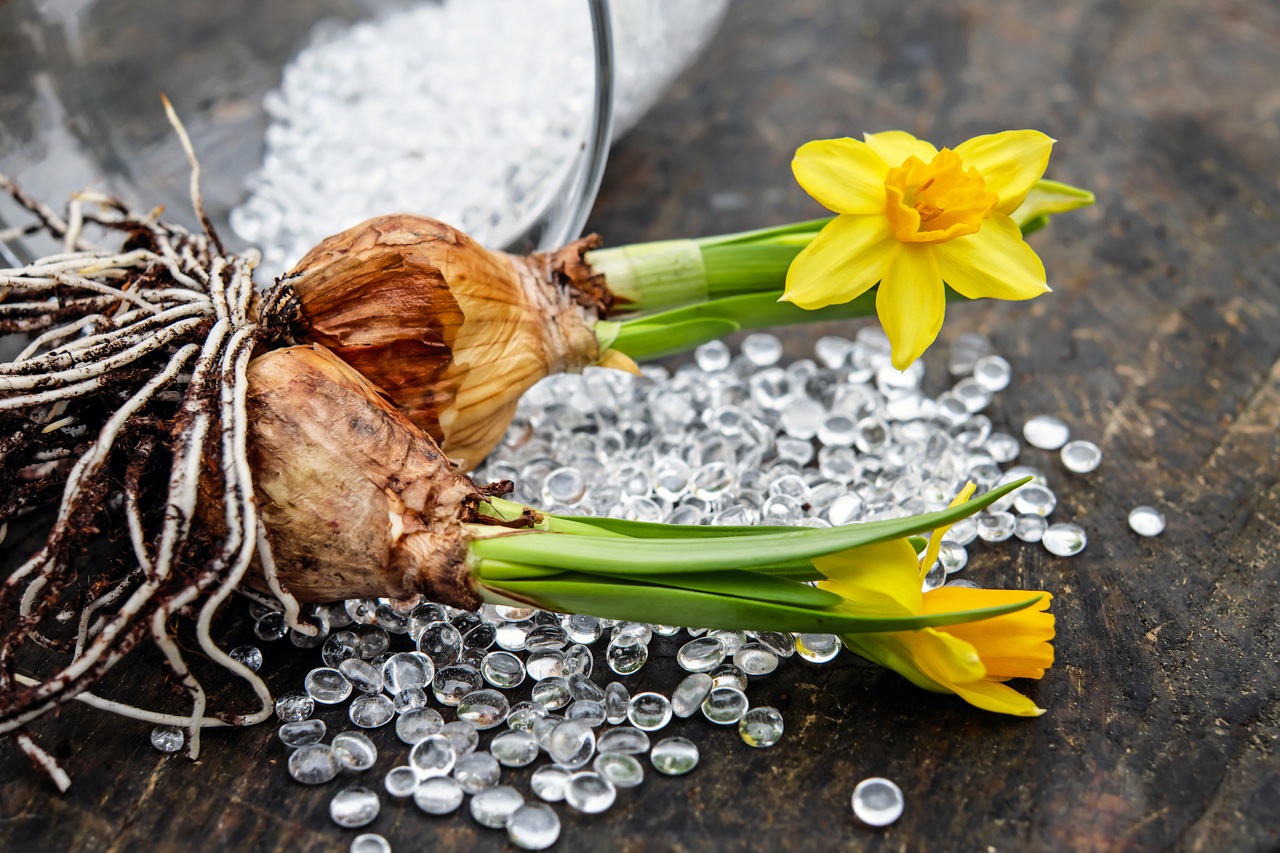
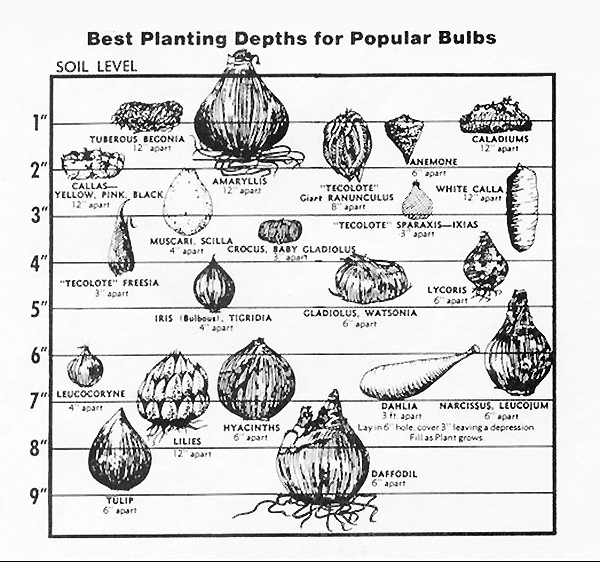
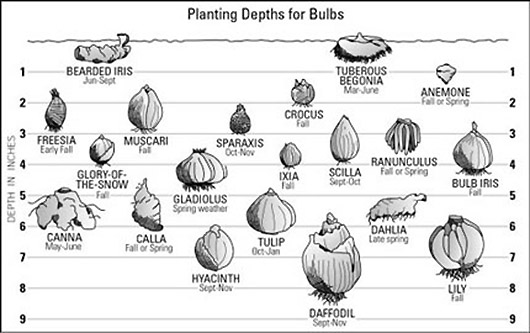
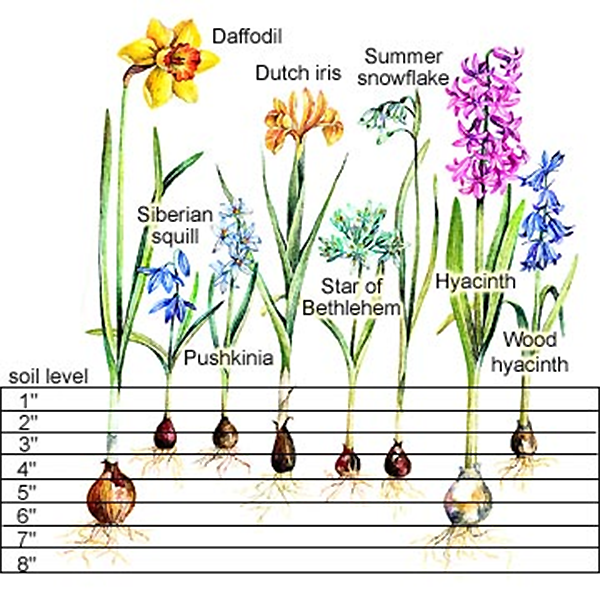
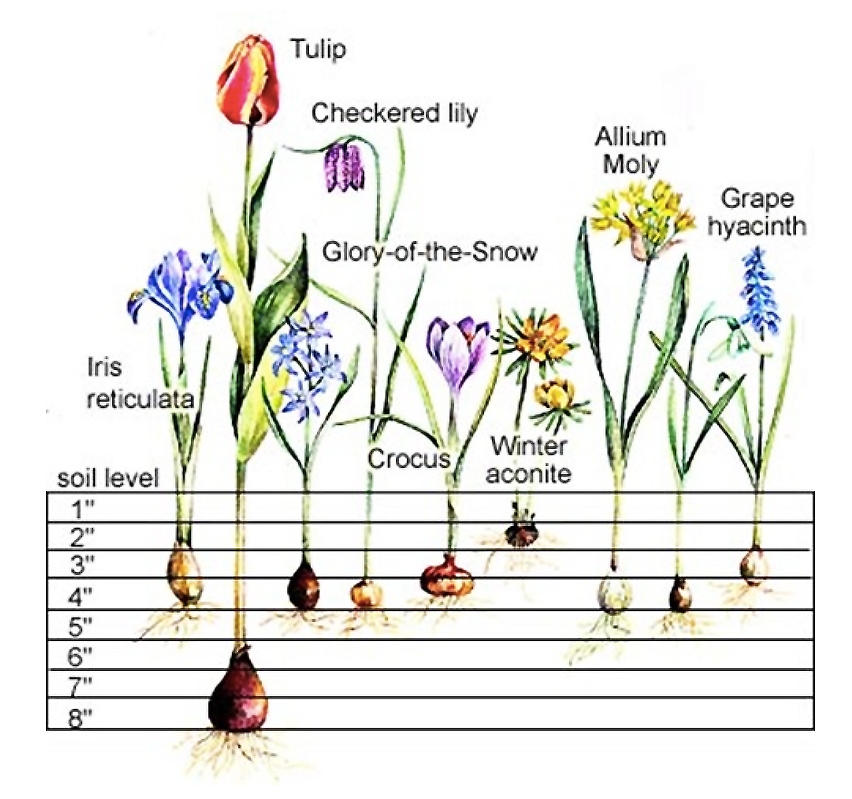
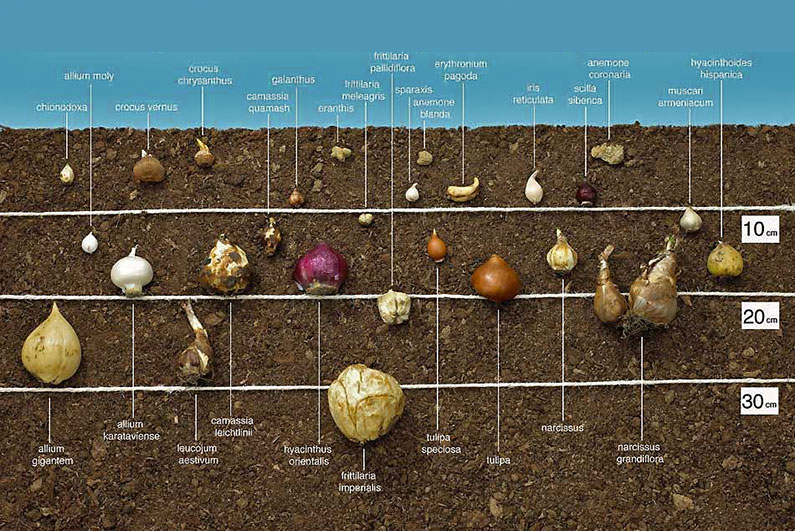
0 Comments